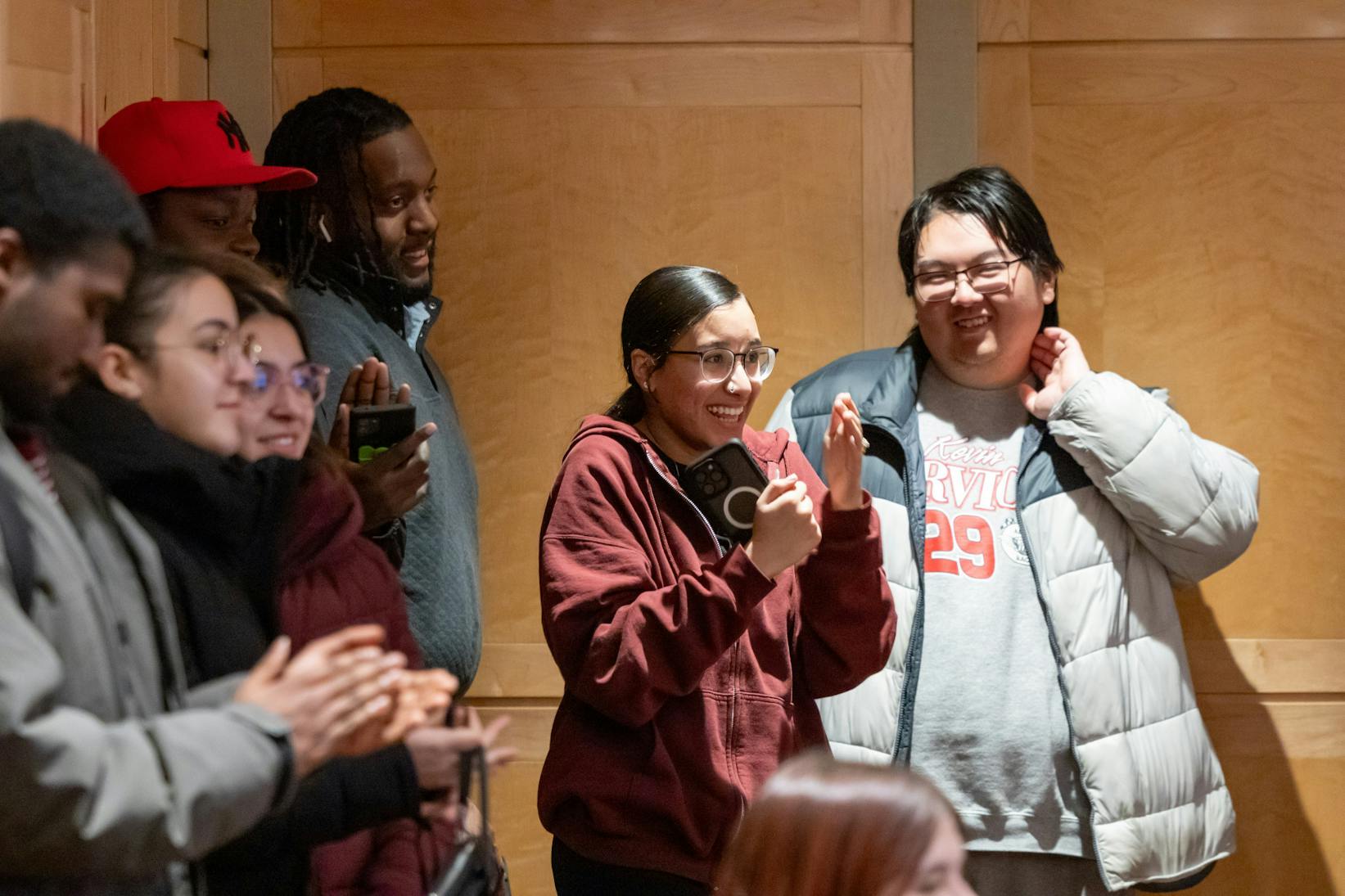Creating lasting change with restorative justice

Central Michigan student Taylor Martin talks about the interactive Q&A activity during the ‘Restorative Practices for Campus Communities’ presentation at the Sarah and Daniel Opperman Auditorium, in the Park Library, Wednesday, Feb. 19, 2025. (CM-Life | Mark Hoover)
Central Michigan University senior Taylor Martin said she believes restorative justice is an effective way of dealing with crime and is beneficial to promoting healing and accountability.
That's why on Wednesday, Feb. 19, she presented to a packed auditorium on the importance of restorative justice in education systems.
As an aspiring teacher and person of color, Martin said that the topic of restorative justice was something she was really passionate about.
She said that because of her passion, she brought up the topic of restorative justice to Alfred Harper, the assistant director of Multicultural Student Education, to see if she could share this discussion with others.
At the event, Martin spoke on how restorative justice has been used in criminal justice and educational settings, and how it can specifically pertain to the college environment.
“Sometimes we need to get to the root of the problem and sometimes punishment isn’t the way to go,” Martin said.
She said when implemented, restorative justice practices can be used to promote accountability, repair harm and strengthen community relationships.
“(Restorative practices are) strategies that help us proactively build community and relationships,” Martin said.
Core principles like addressing the needs of communication, healthy relationships, positive relationships between individuals and holding people accountable go into restorative practice. Martin said restorative justice has been shown to be useful in education settings.
“Studies found that the schools that implemented restorative practices saw a staggering 35% reduction in student arrests in school,” she said.
Martin said restorative justice can also be beneficial in reducing crime rates in an area, creating positive student behavior and self-esteem, positive school climate and restoring relationships in the community.
Despite this, she said that there are many challenges that come with restorative justice, including:
- Resistance to changing from traditional disciplinary methods,
- More resources and training to effectively handle situations and
- Time and resource constraints that organizations may not have.
“(Restorative justice) can be a challenge in a fast-paced college environment where time and resources may be limited,” Martin said.

Attendees clap during the end of the Restorative Practices for Campus Communities presentation at the Sarah and Daniel Opperman Auditorium, in the Park Library, Wednesday, Feb. 19, 2025. (CM-Life | Mark Hoover)
Some of the ways Martin said that students could get involved with restorative justice on campus was by:
- Joining or starting the conversation around restorative justice
- Advocating for change in the way students are disciplined
- Collaborating with peers
- Engaging in restorative practices daily using empathy and compassion
- Supporting campus efforts to reform ways students are disciplined.
“(Restorative practices) highlight the importance of principals like empathy,” Martin said.
In discussing the importance of restorative justice, Tom Idema, the director of Student Conduct, discussed his experience on campus, and how he and his department use restorative justice when dealing with issues on campus.
In his experiences, when working with students and dealing with on-campus issues, he said it’s important to understand that there may be outside circumstances that may influence a person’s behavior that people may not be aware of.
“We don’t want students to be defined by one particular choice,” Idema said. “We learn from our situation and we move forward.”
Many students said they came to the event without knowing what restorative justice actually was. Senior Taylor Horazy was one of these students.
“I didn’t realize how important this was on campus," Horazy said. “(This event) keeps the conversation going while educating the masses.”
Another student, Alyssa Benka, said restorative justice wasn't something she had ever considered. Benka found a lot of what Martin said was important because it highlights a topic many people may not know about.
“Learning and growth is more important than punishment and isolation,” Benka said.



